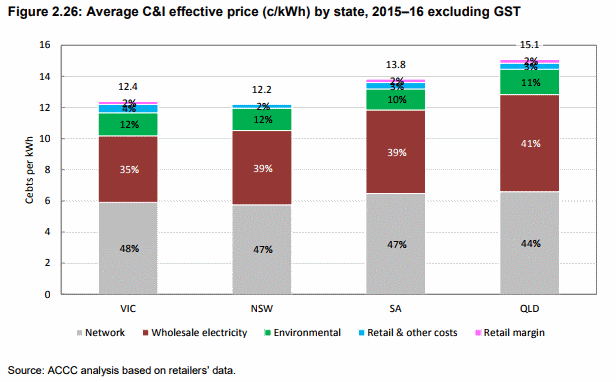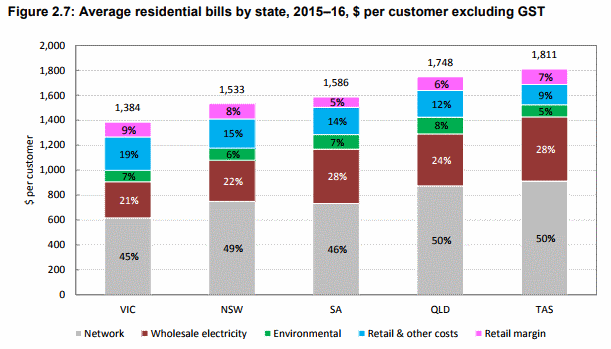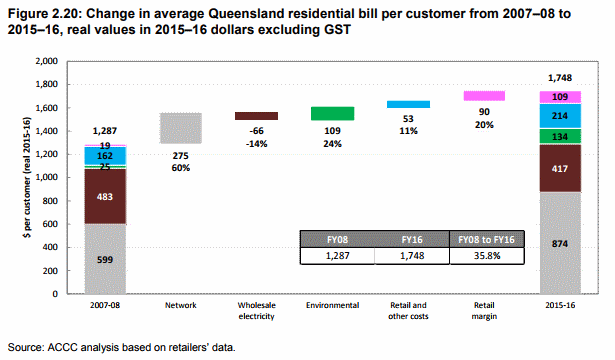Today’s media announcement by Premier Annastacia Palaszczuk is inaccurate – particularly the following quote – so we are providing these graphs from the “ACCC Retail Electricity Pricing Inquiry: Preliminary Report 22 September 2017” to demonstrate the truth. It is important that this debate be held around fact, not fiction, as it affects the lives and jobs of so many of us.
…the Premier said she would be delivering an ultimatum to electricity retailers this week – pass on the full savings that flow from public ownership of Queensland electricity assets, or come face to face with a publicly-owned electricity retailer that will undercut them.
“With our fleet of young and efficient coal and gas-fired generators and adding large-scale solar, we’re producing the cheapest and most reliable wholesale electricity in mainland Australia.
“The consumer watchdog is clear – some retailers in the South-East are taking Queenslanders for a ride,” the Premier said.
The facts are:
- Queensland has some of the most expensive electricity in the country
- Queensland’s electricity retailers are in line with the retail sectors in other states, and there is no criticism of them in the report
- Retail, which is privatised, makes up only 18% of household bills in Queensland, while the government-owned network makes up 50%, and power generation, which is 71% owned by the Queensland government, 24%
- Between 2007-2008 and 2015-2016 there was a 52% increase in household electricity bills, of which 22% is due to retail increases (privatised), 26% to generation (mostly government-owned), 37% to the network (wholly government-owned) and 16% to green schemes.
- After 2016 there was a surge in wholesale power prices which is not captured by the ACCC graphs. This has only been moderated by the government ordering Stanwell to charge less.
- Despite this Stanwell still expects to achieve a return on equity of 15.5% for the 2016-17 year, well above industry peers, such as Origin (10.2%) and AGL (10.18%).
- The key to reducing costs is in the power generation, network and green schemes areas because retailers make up only 18% of electricity bills. Even if retailer charges were reduced by a quarter, that would only reduce a household bill by 4.5%.
Quote
“A government-owned retailer might put pressure on the existing retailers, but only if it were unfairly subsidised by the government. Better to lower the generator and network charges across the board, allowing all retailers access to cheaper power, rather than creaming-off dividends to be used as unsustainable bribes to win an election.
“One way to reduce power prices would be to allow for construction of a new baseload power station in Queensland.”
-
1. Queenslanders paid the second highest invoices, after Tasmania, up until the end of 2016.
2. For commercial and industrial users it was the highest.

3. The ACCC doesn’t have reliable figures for wholesale power for 2016-17, but here is their estimate.
Note the spike last year which was moderated by government order only in the last three months. The 2017-18 figure is for three months only.

3. Queensland’s electricity retailers are similar in cost to other states.
They make up only 18% of the bill, with 74% being generation and polls and wires.

4. The government provides 71% of power in the state
5. The largest increase in costs are in networks and generation, not retail charges.
